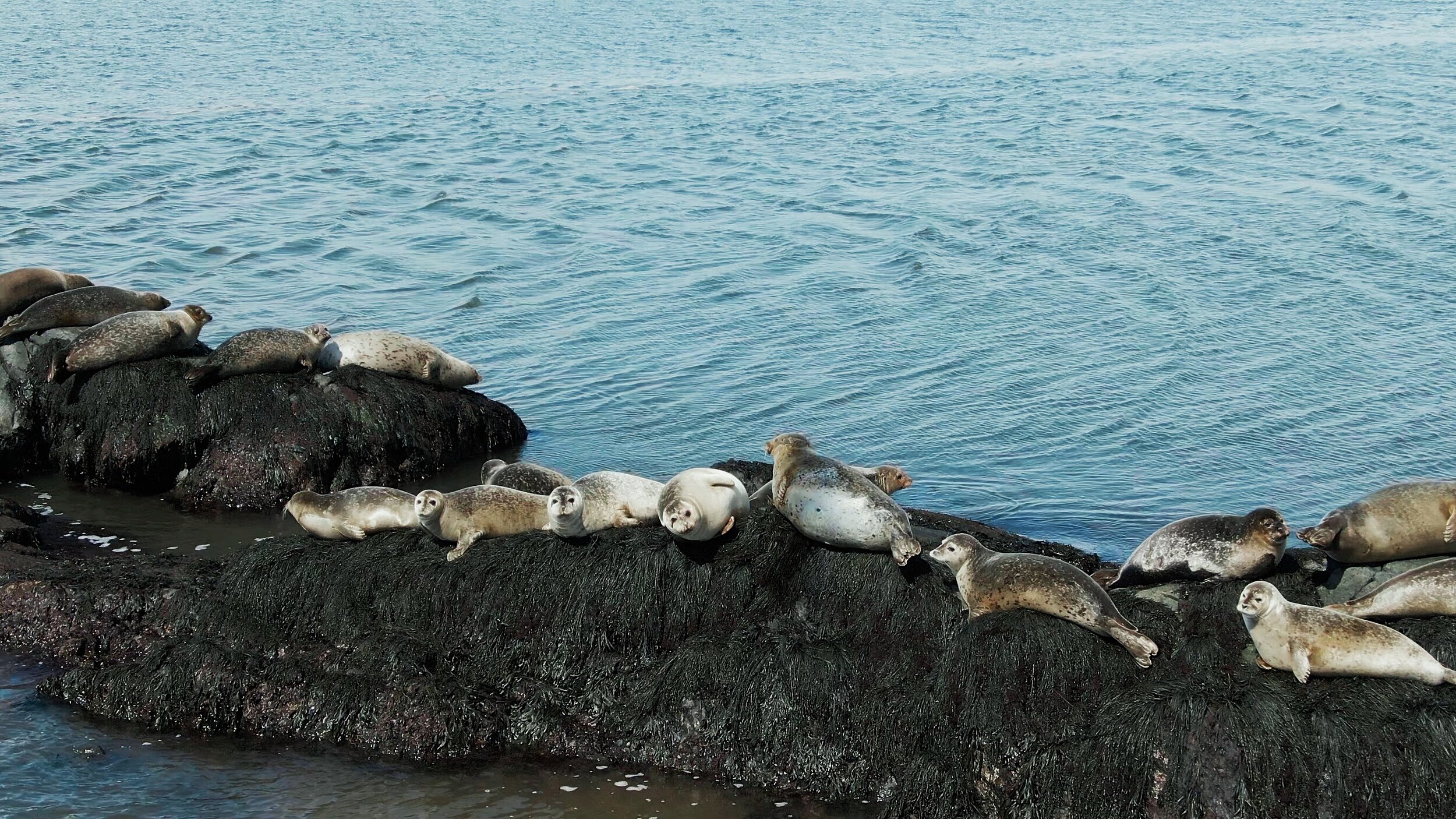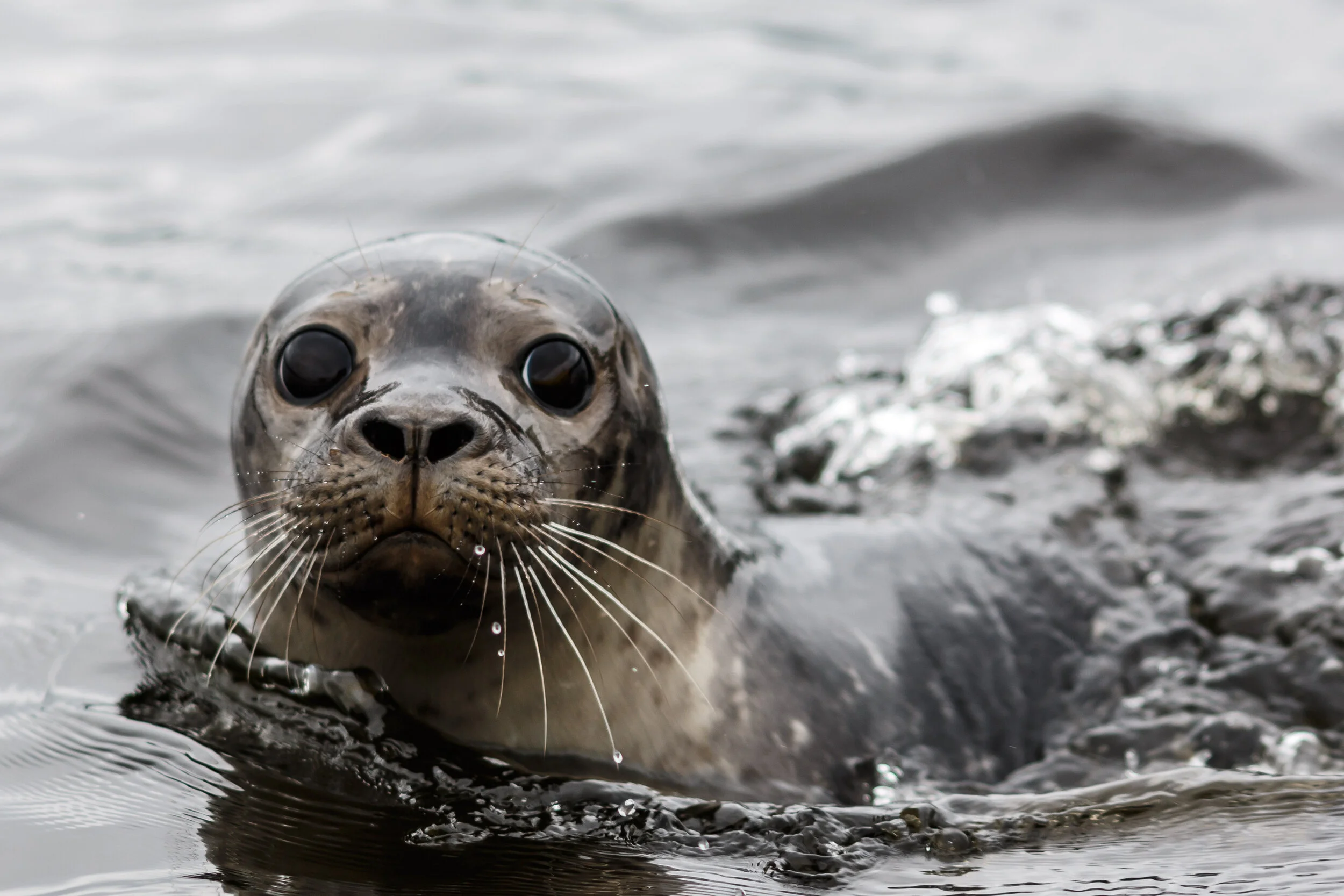
HARBOUR SEALS
Harbour seal monitoring in the saint john harbour
The population of Harbour Seals, Phoca vitulina, in Atlantic Canada is currently listed as unknown and little is known about the behaviour, food habitats and distributions in the area.
During 2018-2021, we collected population data on Harbour Seals in the Saint John Harbour and its nearshore and estuarine environments. Bi-monthly surveys were conducted at low tide and harbour seals that haul out on rocks were counted. This data collected will be used to determine the population numbers of harbour seals in the harbour and to establish their distribution patterns throughout our area.
Harbour Seal (Phoca Vitulina)
Photograph taken by Liane Thibodeau
What is a pinniped?
The word “pinniped” means fin or flipper-footed and refers to marine mammals that have front and rear flippers. Animals that belong in this group includes seals, sea lions and walruses. Although they live in the ocean, they are also adapted to come on land for long periods of time. There are three families of pinnipeds: phocids (seals), otariids (sea lions) and odobenids (walruses). Out of the three pinniped families, only phocids are found in the Bay of Fundy.
Phocids
All true seals (earless) are members of the Phocidae family and can be identified by looking at the ears and flippers. Instead of external ear flaps earless seals have ear holes and small front flippers. Phocids move on land by flopping along on their bellies and when at sea they will move their flippers back and forth like a fish’s tail to propel themselves through the water. The Harbour seal, Phoca vitulina, has the broadest range of any pinniped species. Their habitat includes near-shore, coastal waters on both Canada’s Arctic and Atlantic coasts.
World map providing approximate representation of the harbor seal range. (www.fisheries.noaa.gov/species/harbor-seal)
Haul out Site
Seals can often be seen out of the water on both rocky and sandy substrates on isolated rocks and islands, referred to as a haul out site. A haul out site is defined as a location (such as an intertidal ledge, mudbank, beach or ice flow) where a seal will come completely out of the water and lie quietly for a few hours. In areas like the Bay of Fundy, with high tidal influence, haul out sites are exposed as the tide goes out. It’s thought that seals will haul out to rest, for thermoregulation and to avoid predators. Most individuals will remain relatively stationary between 1-2 haul out sites and do not migrate.
-
The colouration of the Harbour seal is extremely variable, from uniform brown or black to nearly yellowish-white with variations of dark and light irregular spots. A female seal can weigh up to 70kg (150lbs) and males can up to 90kg (200lbs).
-
A seal diet is very broad, feeding on various species of fish and invertebrates. Adult Harbour seals can eat 3-5kg of food per day.
-
Females give birth to seal pups in late May on a haul out site. All pups begin to swim within hours of birth and will wean off their mom between 4-6 weeks of being born.
-
The population of Harbour seals in the Bay of Fundy/Southwest Nova Scotia is thought to be ~3,500 and increasing.
-
Some threats to their population here in the Bay of Fundy include:
- Hunted by fishermen (although protected from seal hunting in Atlantic Canada)
- Mortality due to fishing gear (groundfish gillnets, herring weirs)
- Human interactions such as motorized boats, kayaks, and canoes are a disturbance to haul out sites
- Contaminants such as heavy metal and plastic debris pose a potential threat





